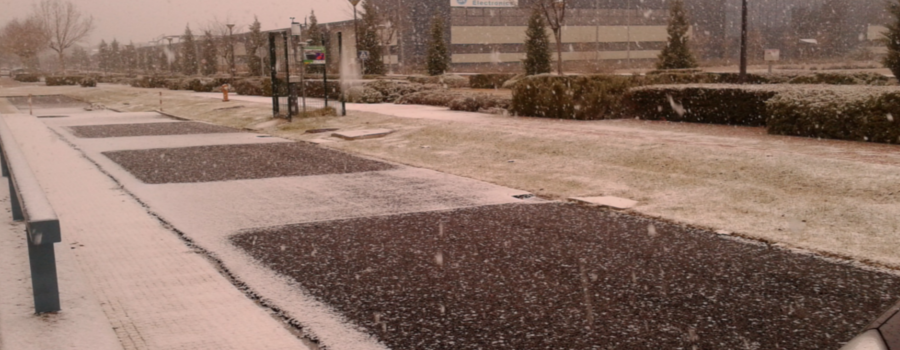
Under road heating
We all know the great efforts made by the authorities in reducing road accidents, however, there are uncontrollable factors. This is the case of adverse weather conditions, including icing on the road surface.
To address this problem, each community uses its own winter maintenance works, defining the riskiest areas and periods of the year, and coordinating the means to combat the ice with tons of chemical deicers (salt, brine, etc.). The main consequence of this process is the significant environmental impact.
What would happen if we proposed roads heating with underfloor heating? The Answer is unanimous: “It is not feasible, the cost is very high .. !! “. But if we say, ” It could save lives on the road and reduce the use of chemical deicers,” things change. Therefore, the challenge ahead is to define specific heating solutions in the most dangerous areas of roads, where the possibility of saving lives is higher, and in fragile ecosystem areas where the use of chemical deicers are more harmful.
Heating the road with underfloor heating is not a new solution, if we surf the Internet and examine the issue in depth, we will see that similar solutions already exist in large bridges and airports. The high cost is not an impediment to its implementation. In general, these solutions are very expensive, both in its development phase and operational phase. Its goal is to melt the ice using large amounts of energy.
Therefore, the challenge ahead is to get an affordable and energy efficient system. This can only be achieved if the problem is approached from different ways (or points of view).
To begin with, the key point is to prevent ice formation, thus drastically reducing the amount of energy required to melt. But how is their formation avoided? A rational solution could be developing intelligent predictive algorithms that warn of icing risk in the short time. These techniques must be based on a good monitoring system. This system will know the weather conditions on the road and temperature conditions inside the asphalt, generally by sensors embedded in the asphalt mix. This monitoring must focus on the real parameters that influence the formation of ice on the road surface.
Another important point to study in depth is the asphalt mixes used in – road building, focusing on both, the binder and the mixture.
Binders that minimize the impact of low temperatures in the performance of the mixtures, ensuring good behavior and suitable fluxing properties are sought. For this purpose polymer modified bitumen and rubber improved bitumens are used. Mix parameters as the gaps will be another factor to consider in the design of these facilities
The next factor to choose is the energy source to heat the system fluid. The energy requirements to prevent icing are less than those required to melt. This makes geothermal energy a strong candidate.
Finally, it is necessary to define the characteristics and distribution of the tubes, the sizing of the installation, the thicknesses of the mixtures and many other factors to be included in the drafting stage of the construction project of a road. All under the tight restrictions imposed by the constructive factors and requirements of driving comfort.
In CARTIF we work in these research areas in order to achieve this goal in collaboration with Eiffage, Euroestudios, Cepsa and the University of Oviedo. So far the results are very encouraging.